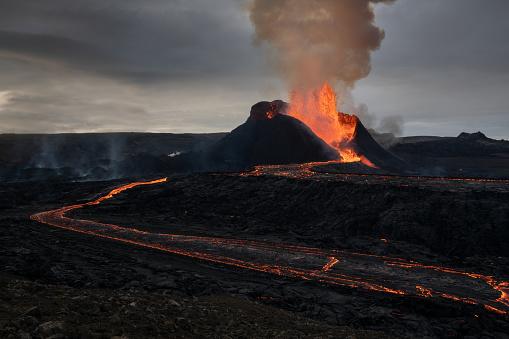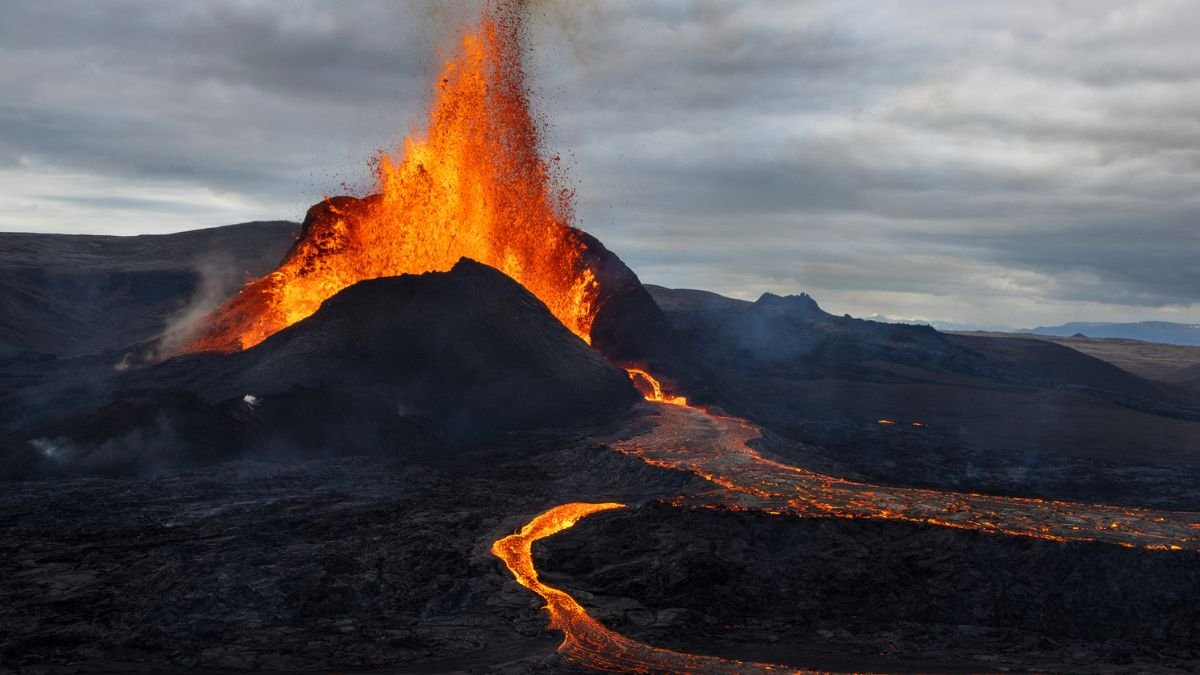Iceland has been under a state of emergency since November 11 due to the risk of eruption of the Fagradalsfjall volcano, located on the Reykjanes Peninsula, about 40 kilometers southwest of the capital Reykjavik. 4,000 residents of the small town of Grindavik were forced to flee their homes late last week. Scientists noted the existence of a magma pocket beneath the region.
After more than two thousand earthquakes were officially recorded, large cracks appeared in the soil that shifted chaotically beneath buildings in the coastal city, splitting streets in half and sending steam into the air. Although magma has not yet risen to the surface, volcanologists believe it is only a matter of time.
The Reykjanes Peninsula has long been subject to volcanic eruptions. After 800 years of slumber, Fagradalsfjall poured lava into a remote valley in the region in March 2021. Two more eruptions occurred after this, but these were thought to be impactful, i.e. with high emission of lava but low explosiveness.
Why is volcanic activity so frequent in Reykjanes?
The intense volcanic activity occurring on the Reykjanes Peninsula is due to the fact that this land arm is located exactly where the North American and Eurasian tectonic plates are diverging. The cut in the lithosphere allows magma to bubble to the surface periodically. a kind of “show” sought after by tourists visiting the country.
Although the fourth eruption of Fagradalsfjall was thought to be inevitable, researchers believed it could occur relatively safely away from population centers or even at sea.
But according to the Icelandic Meteorological Office, A 15 kilometer magma tunnel was formed under the peninsulaIt indicates that a powerful explosion is imminent. According to officials, the “dyke inlet,” a fissure of magma trapped between rocks in the Earth’s crust, may have seeped beneath Grindavik, at a depth of about 800 meters.
What happens if Fagradalsfjall Volcano erupts?

Although initial concerns about the possibility of an unprecedented eruption have faded, volcanologists still fear it large amounts of lava could flow directly into Grindavik and its neighborhoods. “The next few days will be full of uncertainty,” University of Cambridge volcano seismologist Tom Winder tells National Geographic.
This is because there is still a small chance that the magma will not be able to rise to the surface, which could stop the eruption. However, there is also a worst-case scenario in which the city may be completely destroyed due to explosions and intense ash production if the lava reaches the sea.
If this happens, experts say, the consequences should be limited to the country and not create an international problem, as the eruption of the Eyjafjallajökull volcano in 2010, which occurred under a blanket of ice, released a large column of ash in the long term. , Temporarily closed the airspace of part of Europe.
Importance of lava sources in the Fagradalsfjall eruption
Coincidentally, a few days before the Fagradalsfjall demonstrations, a study published in the journal Nature Communications proposed an explanation for the mechanisms involved in lava fountains, the dangerous visual spectacle that marks the Icelandic volcano’s unique eruption pattern.
Taking advantage of the extraordinary conditions that followed the eruption in March 2021, a team of researchers led by volcanologists from the University of Iceland carried out spectroscopic measurements of volcanic gases during the spring’s 16 dormancy cycles.
Scientists who studied the chemical composition of the lava fountain came to the conclusion that it was formed as a result of this. “pressure cycles within a shallow, magma-filled cavity”. As the magma rises, the rising gas forms a layer of foam on the ceiling of the cave. When this layer breaks down, it causes gas bubbles to rise, creating a dynamic overpressure that drives the jets.
Why is Iceland considered the land of volcanoes?
?? Steam emerges from a fissure in Grindavik, Iceland, amid the possibility of a major volcanic eruption in the country
Entire cities were evacuated as one of the largest volcanic eruptions of the century was predicted. pic.twitter.com/bQqX8J5pVQ
— Kallil Oliveira (@kallioliveira_) 13 November 2023
It is located in the region called the Mid-Atlantic Ridge, where the North American and Eurasian tectonic plates separate by 2 cm every year. Iceland is one of the most volcanic regions on the planet. A cloud of molten rock formed over millions of years emerges from this crack and sometimes reaches the surface, forming a new island along the way.
Every four years, there is at least one eruption of the country’s 32 active volcanoes, sending rivers of lava into the icy landscape. One of these explosions The Laki/Skaftareldar volcano in 1783 destroyed almost a quarter of the country’s population. In 2010, Eyjafjallajokull spewed 330 million cubic meters of material and more than 9,000 meters of ash into the air over the course of a week.
On November 14, 1963, a new 2.7 kilometer island suddenly appeared after a violent underwater volcanic eruption reached the surface; This may happen again now. Although somewhat eroded by waves, Surtsey Island has transformed from a barren, volcanic environment into a natural laboratory of plants, insects and birds.
Did you like the content? So, stay updated with more topics like this on TecMundo and take the opportunity to find out if there is or was a volcano in Brazil.
Source: Tec Mundo
I’m Blaine Morgan, an experienced journalist and writer with over 8 years of experience in the tech industry. My expertise lies in writing about technology news and trends, covering everything from cutting-edge gadgets to emerging software developments. I’ve written for several leading publications including Gadget Onus where I am an author.













